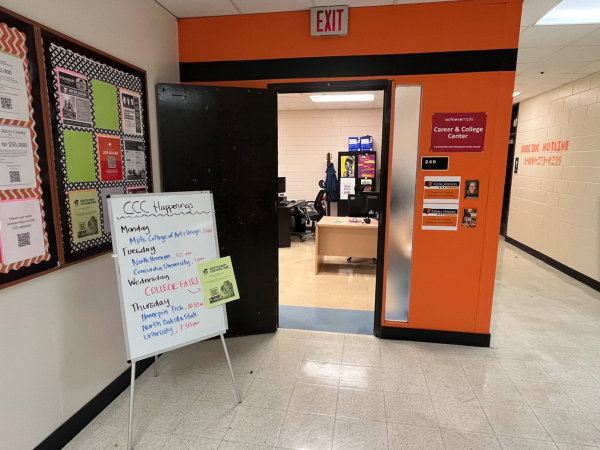New equity and diversity policy aims to close achievement gap
December 19, 2013
“If we look at schools over the past twenty years we’ll see that they have actually become more segregated,” said Stephanie Woldum, a math teacher who teaches classes that explore social justice. This inequity was the focus of the Minneapolis Public School’s new policy concerning equity and diversity.
The achievement gap has been a topic of discussion following the publication of the report “Equality of Educational Opportunity” in 1966. Since then studies have unmasked that Minnesota happens to be one of the worst states in terms of equal opportunities in schools.
According to the National Assessment of Educational Progress, black students have consistently scored twenty or more points lower than white students in reading over the past 20 years. And according to the 2013 ACT testing, 61% of white students demonstrated college readiness, compared to only 16% of black students and 29% of American Indians. This data currently gives us the 2nd largest achievement gap out of all fifty states.
Why does Minnesota have this problem? According to Myron Orfield, a professor at the University of Minnesota Law School, the answer lies in a long history of segregation and racism in Minnesota. “The good question to ask is, ‘Why haven’t blacks who live here locally been able to keep up with whites in the same way?’” he said in an interview by CBS. “I think that’s rooted a lot in the deep racial segregation we have between blacks and whites in the neighborhoods and school systems we have.”
“I think most of it [racism] happens because people think we live in a post racial society, and so racism goes largely unnoticed,” expanded senior Amirah Ellison, co-chair of s.t.a.r.t. (students as allies for racial trust).
Policy 1304 hopes to address this inequity.“We want to close the achievement gap-I call it the opportunity gap,” said James C. Burroughs II, the Director of Equity and Diversity within MPS. “The new [policy] strengthens what we already have in place. It addresses the achievement gap, and addresses racial equity. ”
The policy itself echos this viewpoint. One portion of it reads: “Minneapolis Public Schools is committed to identifying and correcting practices and policies that perpetuate the achievement gap and institutional racism in all forms in order to provide all of its students with the opportunity to succeed. … Academic and participation outcomes, not intentions, shall be the measure of whether we are successful. … All students are equally, while differently, gifted.”
MPS hopes that these new standards will help significantly reduce the achievement gap in Minnesota.
The process of writing the policy was started almost a year ago and included input from a variety of groups, including the Education Equity Organizing Collaborative. In a press release about the new policy Dr. Bernadeia Johnson, superintendent of MPS, said “This is the culmination of much careful study and hard work and I know that it will be a powerful tool in closing the opportunity gap and increasing achievement for all our students.”
“We really were engaged with the community,” explained Burroughs. “We got input and feedback from the community, we were talking to teachers, families. … We’re not just talking to the community, to the adults, we’re going to the students who are actually affected.”
“We also looked at other school districts that are similar in size to Minneapolis, and we looked at what they are doing,” added Burroughs. The policy seems to come almost as an answer to St. Paul School District’s new racial equity policy that was adopted in July and hailed as ‘groundbreaking’ (twincities.com).
“If you’re a person of color you have a much smaller chance of graduation than a white student,” said Ellison.
“It’s not going to be fixed overnight. … We need to start talking and collaborating with people [about these issues].” Policy 1304 aims to help begin to fight against the achievement gap and institutional racism. MPS promises to provide a safe, equal, and welcoming learning environment for all students regardless of race.
This new policy is working to help insure that this standard is always met. Regarding the next phase in the process, Burroughs stated “I think we need to do a good job communicating to staff, students, and families what the policy is about, and how it is going to make positive changes in the community.”












